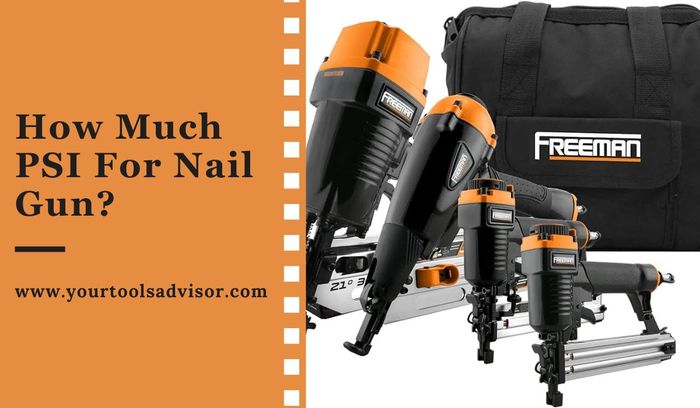Properly measuring a band saw blade is essential for ensuring accuracy and performance. Whether you need to replace a damaged blade or want to determine the size for a specific project, knowing how to measure the blade correctly is crucial.
To measure a band saw blade, simply take a tape measure and measure the blade’s length and width. Keep in mind that band saws are a versatile tool used in various industries, from woodworking to metalworking.
In this article, we will guide you through the process of how to measure band saw blades, providing you with necessary information to choose the right size and ensure optimal cutting efficiency.
So, let’s dive into the simple and straightforward steps for measuring a band saw blade accurately…
What Are Band Saw Blades?
Band saw blades are cutting tools used in conjunction with band saw machines, which are versatile power tools designed for precision cutting in various materials. These blades consist of a continuous band of toothed metal that rotates around two wheels to create a consistent cutting motion.
Band saw blades come in a variety of sizes and tooth configurations to accommodate different materials, such as wood, metal, and plastic. The teeth on the blade can vary in size, spacing, and arrangement, allowing for efficient cutting of intricate shapes and curves. The choice of the right band saw blade depends on the specific material and the desired cutting outcome.
Whether in woodworking shops, metalworking facilities, or even home workshops, band saw blades play a crucial role in achieving accurate and efficient cuts across a wide range of applications.
Read More: What Is Band Saw?
Components Of A Band Saw Blade
When it comes to understanding band saw blades, it’s important to first familiarize yourself with the key components that make up these powerful cutting tools.
A band saw blade consists of several parts that work together to ensure smooth and efficient cutting performance.
- Blade Body: The blade body is the backbone of a band saw blade. Made of a high-quality steel alloy, it provides the required strength and durability.
- Blade Teeth: The blade teeth are responsible for actually cutting the material. They come in various shapes and patterns, depending on the type of cut you need to make.
- Blade Gullet: The gullet is the space between the teeth. It allows for the easy removal of chips and helps prevent the blade from clogging.
- Blade Back: The back of the blade provides additional support to the teeth. It ensures stability and helps maintain the blade’s structural integrity during the cutting process.
- Blade Weld: In some cases, band saw blades may need to be welded together to achieve the desired length. A properly executed weld is crucial for maintaining a strong and seamless blade.
Band Saw Blade Tooth Geometry And Types
The tooth geometry of a band saw blade dictates its cutting capabilities. Different tooth shapes are designed to excel in specific applications, allowing for efficient and precise cutting.
Here are some common tooth geometries you’ll come across:
- Raker Tooth: Also known as a straight tooth, this type of tooth features alternate sets of teeth that are offset to the left and right. Raker teeth are versatile and work well for general-purpose cutting.
- Hook Tooth: With deep gullets and a positive rake angle, hook teeth are ideal for aggressive cutting. They excel when cutting softwoods, plastics, and non-ferrous metals.
- Skip Tooth: A skip tooth blade has widely spaced teeth, which allow for efficient chip clearance. This tooth geometry is commonly used when cutting thin materials or when a smooth finish is desired.
- Variable Tooth: As the name suggests, a variable tooth blade incorporates different tooth sizes and pitches along its length. This design reduces vibration and noise, making it suitable for cutting various materials.
Read More: Where To Buy Band Saw Blades From?
Blade Materials And Their Impact On Performance
The choice of blade material can significantly impact the performance and longevity of a band saw blade.
Here are some commonly used blade materials and their characteristics:
| Material | Characteristics |
|---|---|
| Carbon steel | Cost-effective, provides durability and flexibility, suitable for general-purpose cutting tasks. |
| Bi-metal | Combines the durability of high-speed steel (HSS) with the flexibility of carbon steel. Offers extended blade life and improved cutting performance. |
| Carbide-tipped | Features carbide teeth for exceptional hardness and wear resistance. Ideal for cutting abrasive and hard materials. |
Choosing the right blade material depends on factors such as the type of material being cut, the desired cut quality, and your cutting application. It’s important to select a blade material that matches your specific cutting needs to achieve optimal results.
How To Measure Band Saw Blades?
Accurate measurement is crucial when it comes to working with band saw blades. Knowing the correct size of a blade ensures a precise cut and helps increase efficiency. To achieve accurate measurements, you’ll need to have the right tools at your disposal.
In this section, we’ll discuss the essential tools required for measuring band saw blades and provide some valuable tips for maintaining and calibrating these tools.
Essential Tools For Accurate Measurements
When measuring band saw blades, using the right tools is essential to obtain accurate results. Here are the necessary instruments you should have:
- Tape Measure: A tape measure is a versatile tool that allows you to quickly and easily measure the length and width of a band saw blade. Opt for a tape measure with a sturdy locking mechanism to ensure precise measurements.
- Vernier Caliper: A vernier caliper is a precision measuring tool that enables you to measure the thickness of a band saw blade with great accuracy. Ensure your vernier caliper has a fine adjustment mechanism and a clear scale to obtain reliable measurements.
- Angle Finder: An angle finder is useful when determining the rake angle or tooth angle of a band saw blade. This tool helps you achieve precise cuts by ensuring the correct angle for your specific cutting needs. Choose an angle finder with easy-to-read markings and a secure locking mechanism.
Tips For Maintaining And Calibrating Measuring Tools
To ensure the accuracy and longevity of your measuring tools, here are some useful tips for maintenance and calibration:
- Regular Cleaning: Keep your measuring tools clean and free from dirt, dust, and debris. Clean them after each use with a soft cloth to prevent any buildup that may affect their accuracy.
- Calibration Checks: Periodically check the accuracy of your measuring tools by comparing them to a known standard. Use a calibration block or a gauge block set to verify the accuracy of your tape measure, vernier caliper, or angle finder.
- Storage: Store your measuring tools in a clean and dry environment to prevent moisture or humidity from affecting their precision. Consider using protective cases or pouches to prevent any accidental damage.
- Proper Handling: Handle your measuring tools with care and avoid dropping them or subjecting them to excessive force. Rough handling can throw off their calibration and compromise their accuracy.
- Regular Maintenance: Lubricate moving parts as recommended by the manufacturer to ensure smooth operation and prevent any wear that may affect the accuracy of your measuring tools.
Safety Precautions When Working With Band Saw Blades
Working with band saw blades requires utmost caution to avoid accidents and injuries. Here are some crucial safety precautions to adhere to:
- Wear Protective Gear: Always wear appropriate personal protective equipment such as safety glasses, gloves, and ear protection when handling band saw blades. This helps safeguard against potential hazards.
- Inspect Blades: Before using a band saw blade, carefully inspect it for any signs of damage, such as cracks or missing teeth. Never use a damaged blade as it can lead to unpredictable results and safety hazards.
- Secure the Material: Ensure the material you are cutting is properly secured to prevent any unexpected movement that could cause the blade to bind or kickback.
- Maintain a Safe Distance: Maintain a safe distance from the cutting area and keep your hands clear of the blade’s path to avoid potential injuries.
- Disconnect Power: When changing or adjusting band saw blades, always disconnect the power supply to prevent accidental startup and potential accidents.
Measuring The Length Of A Band Saw Blade
Accurately measuring the length of a band saw blade is crucial when it comes to selecting the right replacement or purchasing a new one. Incorrect measurements can lead to a wasted investment or inefficient cutting.
In this section, we will take you through a step-by-step process of measuring band saw blade length, different techniques to choose from, and common mistakes to avoid during the measurement.
Step-by-step Guide To Measuring Blade Length
Follow this simple step-by-step guide to ensure correct measurement of your band saw blade’s length:
- Begin by taking off the band saw’s blade if it is currently installed. This will allow for easier and more accurate measurement.
- Lay the blade flat on a surface. Ensure it is fully extended and not twisted or kinked.
- Use a tape measure or ruler with metric measurements if possible. Start measuring from the tip of the blade.
- Hold the tape measure or ruler firmly against the edge of the blade, making sure it follows the curve of the tooth and runs along the back edge.
- Extend the measurement until you reach the opposite tip of the blade. Take note of the measured length in either inches or millimeters.
- Double-check the measurement to ensure accuracy. If there is any doubt, it’s best to measure again.
Following these steps will help you accurately measure the length of your band saw blade and ensure you are provided with the correct replacement or new blade.
Choosing The Appropriate Measuring Technique
When it comes to measuring the length of a band saw blade, there are a few different techniques you can choose from, depending on your preference and the tools available.
Here are two commonly used techniques:
- Tape Measure: This is the most straightforward technique, requiring only a tape measure or ruler with metric measurements. It is an excellent choice for quick and accurate measurements if the blade is easily accessible.
- Blade Length Tester: For those looking for a more precise measurement and have a dedicated tool, a blade length tester can be used. These testers are specifically designed for measuring band saw blades and often provide more accurate results.
Both techniques can yield accurate measurements, so choose the one that suits your needs and tools available.
Measuring The Width Accurately Using Precision Tools
When it comes to measuring the width of a band saw blade, precision is key. Using specialized tools can help you obtain accurate measurements. One such tool is a dial caliper, which allows you to measure the width with precision.
Here’s how you can do it:
- Start by setting the dial caliper to zero to ensure accurate measurements.
- Place the jaws of the dial caliper on opposite sides of the band saw blade.
- Apply gentle pressure to the jaws until they securely grip the blade.
- Read the measurement displayed on the dial caliper. This measurement represents the width of your band saw blade.
Using a dial caliper ensures that your measurements are accurate, making it easier for you to choose the right replacement blade or adjust your saw accordingly.
It’s important to note that band saw blades come in various widths, so knowing the exact measurement is crucial for achieving precise cuts.
Calculating The Thickness Of The Blade
Determining the thickness of your band saw blade is equally important. This measurement helps you select the appropriate tension and guide settings for your blade.
To calculate the thickness, follow these steps:
- Identify a section on the blade that is free from teeth and any other irregularities.
- Use a micrometer to measure the thickness of this section. Micrometers provide accurate readings for thin objects and are widely used for precision measurements.
- Place the micrometer jaws gently on both sides of the section, ensuring that they are parallel to each other.
- Take the measurement shown on the micrometer display. This measurement represents the thickness of your band saw blade.
Calculating the blade thickness helps you set up your band saw correctly, preventing issues such as blade wandering or excessive sawdust accumulation. It ensures that the blade fits snugly in the saw’s guides and provides optimum performance.
Importance Of Accurate Measurements For Optimal Performance
Achieving accurate measurements of the width and thickness of your band saw blade is crucial for its optimal performance. An improperly sized blade can lead to a range of problems, including inaccurate cuts and increased wear and tear on both the blade and the saw itself.
By measuring the width accurately, you can ensure that the blade fits snugly on the saw’s wheels, minimizing vibrations and promoting smoother cuts. Calculating the thickness allows you to set the appropriate tension and guide settings, preventing blade oscillation and enhancing cutting accuracy.
Ultimately, accurate measurements help you achieve precise, clean cuts and extend the lifespan of your band saw blade. So, take the time to measure your band saw blade correctly, and you’ll reap the benefits of optimal performance in all your woodworking projects.
Calculating The Teeth Per Inch (TPI)
Calculating the teeth per inch (TPI) of a band saw blade is essential for accurate cutting. By measuring the distance between teeth and dividing it by one inch, you can determine the TPI.
Defining Teeth Per Inch And Its Relationship To Cutting Applications
Teeth per Inch (TPI) is a crucial measurement when it comes to selecting the right band saw blade for specific cutting tasks. TPI refers to the number of teeth present on one inch of the band saw blade. This measurement directly impacts the performance and efficiency of the blade in different cutting applications.
Understanding the relationship between TPI and cutting applications is essential for achieving accurate and desired results. Band saw blades with a higher TPI are ideal for making intricate and detailed cuts in thinner materials like plastics or softwoods. On the other hand, blades with a lower TPI are more suitable for heavier and rougher cuts in thicker materials such as hardwood or metal.
Techniques For Counting Teeth Per Inch
Accurately counting the teeth per inch is crucial for determining the right blade for your specific cutting needs.
Fortunately, there are a few techniques you can use to count the TPI:
- Visual Inspection: The simplest method is to visually inspect the blade and count the number of teeth within an inch using good lighting and a magnifying glass if needed.
- Using a Notched Rule: Another technique involves using a notched rule that aligns with the teeth. By counting how many notches fit within an inch, you can determine the TPI.
- Using a TPI Gauge: TPI gauges are specially designed tools that make it even easier to count the number of teeth per inch. These gauges feature teeth-like notches that can be easily matched with the bandsaw blade to get an accurate count.
Frequently Asked Questions About How To Measure Band Saw Blades
What Size Band Saw Blades Do I Need?
You will need band saw blades that match the dimensions of your band saw. Measure the length, width, and the TPI (teeth per inch) to determine the correct size. Matching the blade size will ensure proper cutting performance.
How long is the blade on a 12 inch band saw?
The blade on a 12-inch band saw typically measures 80 inches in length.
Are all bandsaw blades the same length?
No, bandsaw blades are not all the same length. The length of a bandsaw blade varies depending on the specific bandsaw machine it is intended for, as different machines require different blade sizes to operate effectively.
How is bandsaw length measured?
Bandsaw length is typically measured by the circumference of the bandsaw blade, which is the total length around the blade’s outer edge. This measurement accounts for the entire loop of the blade, providing an accurate representation of its size for proper fit and compatibility with specific bandsaw models.
Conclusion
In conclusion, mastering the art of how to measure band saw blades is an essential skill for any woodworking enthusiast or professional. The precision and accuracy of your measurements directly impact the performance of your band saw, ensuring clean and precise cuts every time.
By following the step-by-step guide outlined in this blog post, you can confidently measure your band saw blades, taking into account both the blade length and width.
Remember, accurate measurements lead to optimal blade tension, reducing the risk of accidents and enhancing the overall efficiency of your band saw.
Whether you’re a seasoned woodworker or just starting on your woodworking journey, understanding the intricacies of band saw blade measurement is a fundamental aspect that contributes to the success of your projects.
So, take the time to measure your band saw blades correctly, invest in quality blades, and enjoy the improved performance and longevity of your band saw. Armed with this knowledge, you can confidently tackle woodworking projects with precision and finesse, achieving results that showcase the true potential of your craftsmanship.
Happy measuring and happy woodworking!




Leave a Reply